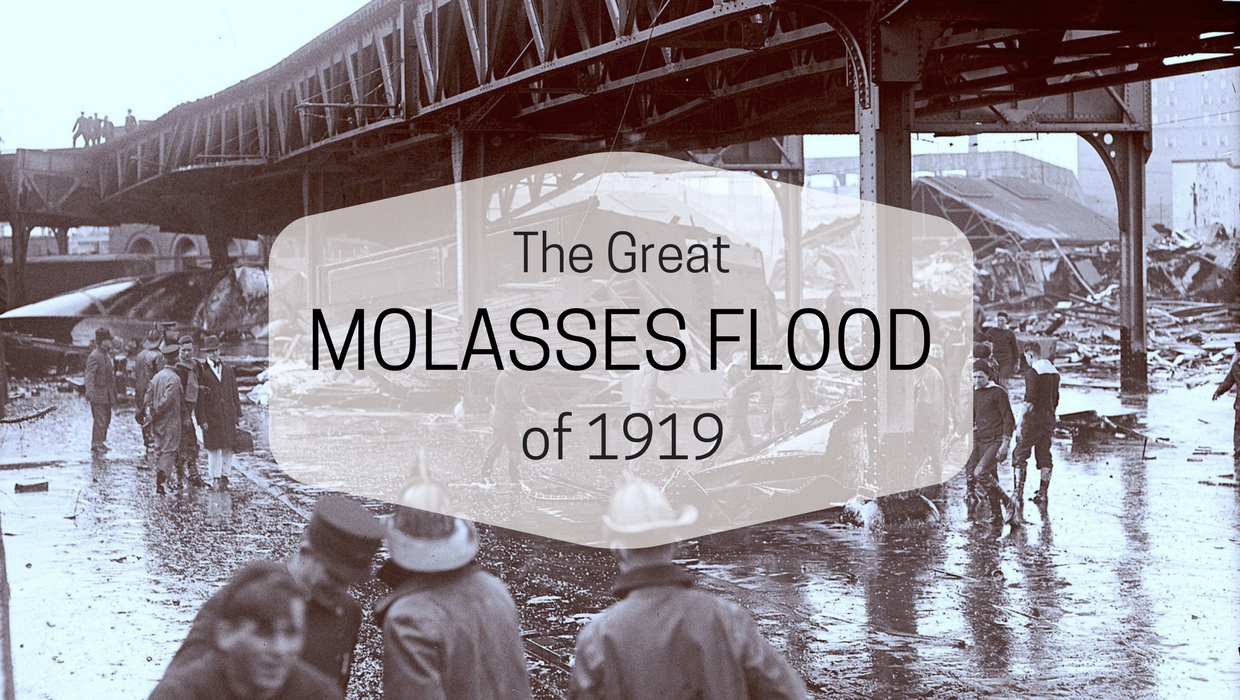There was a great molasses flood in boston in 1919

The Great Molasses Flood in Boston in 1919

In one fateful event that had Bostonians stunned, the Great Molasses Flood of 1919 left a lasting impact on the city’s history. On January 15, 1919, a gigantic molasses tank burst in the North End neighborhood of Boston, causing a catastrophic wave of sticky sweetness to engulf the area. This bizarre disaster claimed the lives of 21 people, injuring many others, demolishing buildings, and forever changing the surrounding landscape.
The Disaster Unfolds
The molasses tank, owned by the Purity Distilling Company, soared to heights of 50 feet and held approximately 2.3 million gallons of molasses. The thick, treacly substance was commonly used in the production of alcohol and baking goods, making it a significant element in Boston’s industrial scene during that era.
As the temperatures in Boston experienced a dramatic increase, so did the pressure within the tank. Tragically, the tank’s rivets, weakened by faulty construction and lack of maintenance, could not withstand the rising pressure. With an explosive force, the tank ruptured, releasing an immense wave of molasses that traveled at an estimated speed of 35 miles per hour.
A Sticky Deluge

The powerful surge of molasses, measuring around 25 feet high, tore through the streets, demolishing everything in its path. Buildings crumbled like they were made of cards, and steel girders twisted under the force of the flood. It was reported that horses, cars, and even elevated railway tracks were swept away by the relentless flow of molasses. People unfortunate enough to be present were either crushed, drowned, or suffocated under the thick syrupy mass.
The Aftermath and Investigation
Once the chaos subsided, the immense devastation could be quantified. The cleanup efforts took weeks, with the sweet, sticky mess finding its way into homes, businesses, and cracks in the pavement. It is said that the smell of molasses lingered in the area for years afterward, a haunting reminder of the tragic event.
Investigations into the disaster placed the blame on several factors. The Purity Distilling Company had rushed the construction of the tank to meet the increasing demands for industrial alcohol during World War I. Furthermore, due to the lack of industry and construction regulations at that time, safety precautions that could have prevented the disaster were overlooked.
Legacy of the Molasses Flood
The Great Molasses Flood of 1919 sparked important changes in both engineering and legal practices. The incident highlighted the need for stricter construction regulations and safety measures. This disaster marked a significant turning point for Boston and became a catalyst for the establishment of more comprehensive building codes and inspections.
Today, the Great Molasses Flood of 1919 remains a unique and tragic event in Boston’s history. It serves as a reminder of the consequences that can occur when corners are cut and safety is disregarded. The legacy of the disaster lives on, never to be forgotten.
Tags
Share
Related Posts
Quick Links
Legal Stuff

